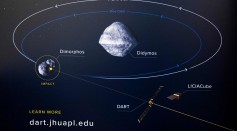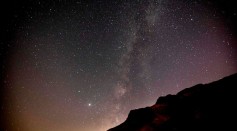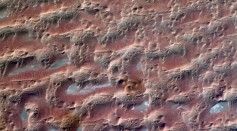images
3D Images of Titanic Wreck Reveal the Fate of Victims Who Went Missing After the Disaster

NASA's DART Successfully Completes First Planetary Defense Test; Images of the Spacecraft's Asteroid Crash Revealed

Night Sky Turned Red for 10 Minutes: Is It Dangerous and Should We Blame SpaceX It?

Young Stellar Jets Wandering Through Field of Stars Captured in New Images Using Gemini South Telescope
NASA’s TESS Captures Giant Active Comet Moving Farther Away From the Sun
LOOK: Sharpest Images of 42 Largest Asteroids Released; Features Unique Shapes Like Dog-Bone, Spheres

New ISS Images form Earth Resembles Mars-Like Dunes
Milky Way Galaxy Picture: Violent 'Downtown' Shown in NASA's New Stunning Cosmic Image

8-Mile Long Rock Painting From the Ice Age, Discovered
ESA Rosetta Spacecraft Is Showing Off Its ‘Cheops’
Most Popular

How Technology Is Changing the Real Estate Industry?

Study Reveals High Turnover in Scientific Research Careers: What This Means for Future Scientists

How a Plant-Based Diet Can Protect Against Breast Cancer: Insights from Nutrition Research

Why It's So Difficult to Lose Weight: The Biological Explanation Behind Obesity






